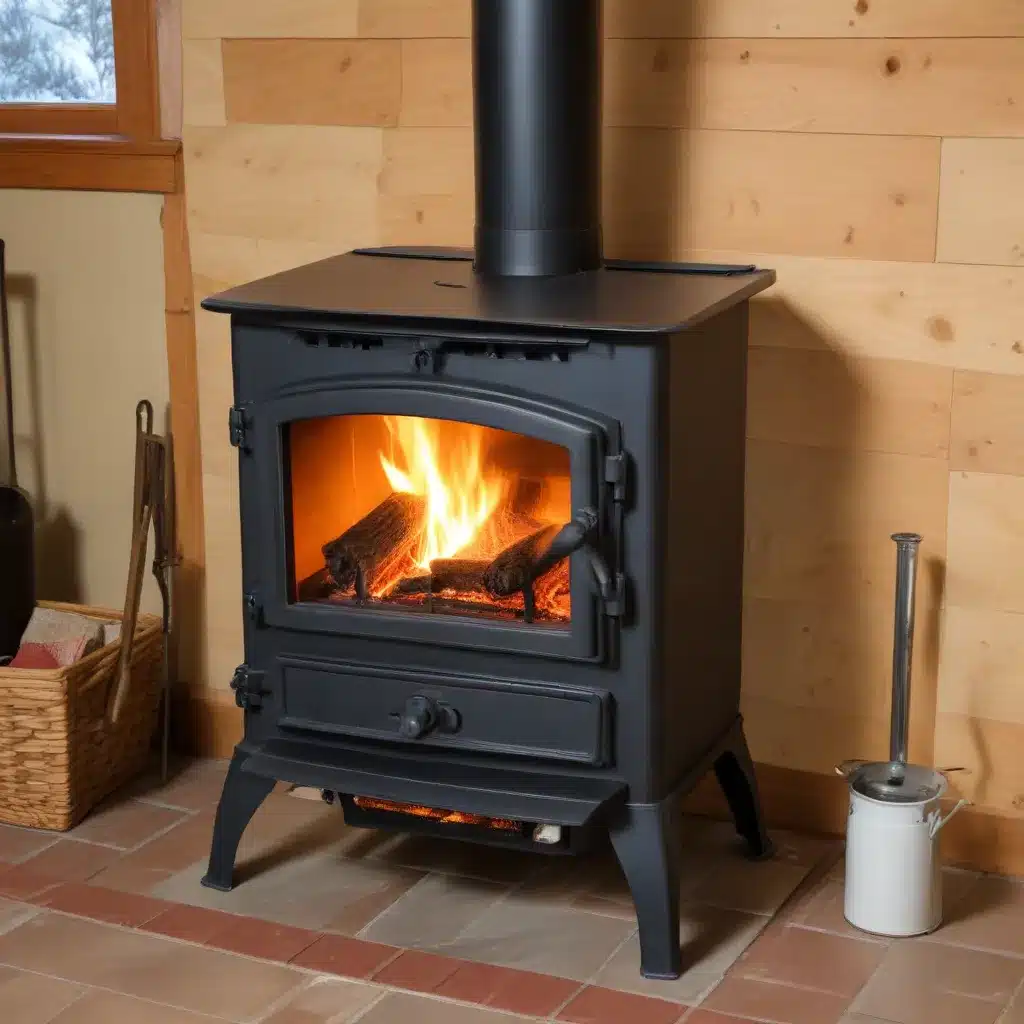
Unleash the Full Potential of Your Wood Stove: Tips and Techniques for Efficient Heating
As a seasoned expert in the world of wood stoves and heating solutions, I’m here to share practical insights and strategies to help you maximize the heating capacity of your wood stove without draining your budget. Whether you’re seeking to stay cozy during the chilly winter months or looking to cut down on your energy costs, this comprehensive guide will provide you with the knowledge and tools to optimize your wood stove’s performance.
Understanding the Importance of Thermal Mass
One of the key factors in maximizing your wood stove’s heating capacity is the concept of thermal mass. Thermal mass refers to the ability of materials to absorb and store heat, and it can have a significant impact on the overall efficiency and heat output of your wood stove.
Brick, tile, and soapstone are examples of materials with high thermal mass, meaning they can absorb and retain heat more effectively than lighter materials like drywall or insulation. By incorporating these high-mass materials into your wood stove setup, you can create a larger surface area for heat radiation, resulting in a more even and prolonged heat distribution throughout your living space.
According to the Green Building Advisor, the specific heat capacity of soapstone, for example, is about 20% greater than the average for natural stone. This makes soapstone an excellent choice for maximizing the thermal mass of your wood stove setup.
Strategically Designing Your Wood Stove Hearth and Surroundings
When it comes to optimizing the heating capacity of your wood stove, the design and construction of your hearth and surrounding walls can make a significant difference. Here are some tips to consider:
Hearth Thickness: While a thicker hearth may seem like a straightforward solution, it’s important to balance the benefits of thermal mass with the practical concerns of accessibility and safety. As mentioned in the Green Building Advisor article, a thicker hearth could potentially create a tripping hazard, so it’s crucial to find the right balance between thermal mass and user-friendliness.
Wall Construction: The materials used for the wall behind your wood stove can greatly impact its heat transfer and storage capabilities. Brick, tile, and soapstone are excellent choices due to their high thermal mass, as they can absorb and radiate heat more effectively than lightweight materials like drywall. Consider constructing a thick, multi-layered wall with these high-mass materials to maximize the heat-storing potential of your setup.
Insulation and Air Sealing: While the thermal mass of your hearth and walls is important, it’s equally crucial to ensure proper insulation and air sealing in the rest of your home. By reducing heat loss through the walls, windows, and other openings, you can maximize the efficiency of your wood stove and minimize the amount of fuel required to maintain a comfortable temperature.
Harnessing the Power of Thermal Circulation
Another key aspect of maximizing your wood stove’s heating capacity is understanding and harnessing the principles of thermal circulation. The way in which the hot air and smoke flow through your wood stove and into the surrounding space can significantly impact the overall heat distribution and efficiency.
One effective strategy is to incorporate a venturi-style firebox, as described in the Green Mountain Grills article. This design creates a cyclone-like air flow, ensuring maximum combustion and the efficient circulation of heat and smoke throughout the room. By understanding and optimizing the airflow dynamics of your wood stove, you can ensure that the heat generated is distributed effectively, rather than being lost up the chimney.
Maintaining and Upgrading Your Wood Stove
Regular maintenance and strategic upgrades can also play a crucial role in maximizing your wood stove’s heating capacity. Ensure that your wood stove is properly cleaned and serviced, as buildup of ash and creosote can impede airflow and reduce efficiency. Additionally, consider upgrading to a more modern and technologically advanced wood stove model, which may offer features like better temperature control, improved combustion efficiency, and smart monitoring capabilities.
Supplementary Heating Strategies
While your wood stove may be the primary source of heat in your home, there are additional strategies you can employ to enhance its overall heating capacity and efficiency. Consider installing a thermal mass storage system, such as a water tank or soapstone-based system, to store excess heat generated by the wood stove and release it gradually over time. This can help maintain a more consistent and even temperature throughout your living space, reducing the need for frequent wood stove refueling.
Another effective strategy is to utilize passive solar design elements, such as strategically placed windows, thermal mass materials, and air circulation systems. By harnessing the natural warmth of the sun, you can reduce the overall demand on your wood stove and further maximize its heating potential.
Conclusion: Unlocking the Full Potential of Your Wood Stove
By understanding the principles of thermal mass, optimizing your wood stove’s design and surroundings, maintaining it properly, and employing supplementary heating strategies, you can unlock the full potential of your wood stove and enjoy efficient, cost-effective heating without breaking the bank. Remember, every home and wood stove setup is unique, so be sure to tailor these recommendations to your specific needs and preferences.
For more information and personalized guidance, I encourage you to visit https://woodstoveheaters.com/, where our team of experts is dedicated to helping you maximize the performance and efficiency of your wood stove.


